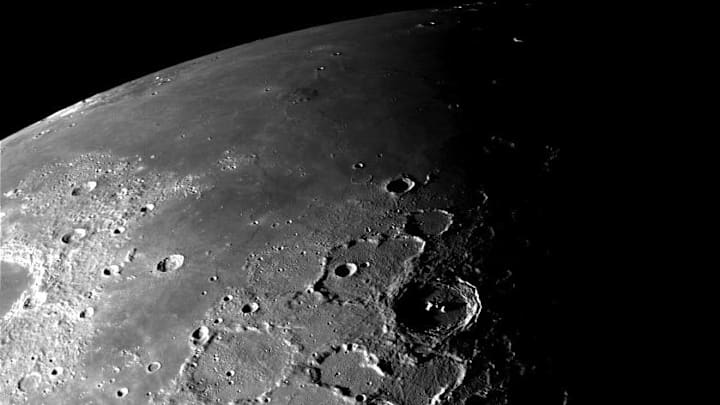Everybody knows that Earth’s moon does not, in fact, consist of dairy products. So where did the myth that the moon is made of cheese come from?
Though the idea that the moon is made of cheese has been around for millennia, it’s doubtful that anyone ever actually believed it, at least not academically. The earliest record of this bizarre notion comes from a medieval Slavic fable in which a ravenous wolf chases a seemingly hapless fox, hoping to score an easy meal. The fox convinces his pursuer that the moon’s reflection on a nearby pond is actually a block of cheese floating on its surface and that the wolf must drink all of its water to acquire the tasty treat. Guzzling his way to the prize, the wolf eventually drinks too much and bursts, leaving the fox alive and victorious.
But the best-known early citation dates to 1546, and can be found in The Proverbs of John Heywood. The document is a compendium of some of the author’s most famous sayings, such as “the more, the merrier,” “a penny for your thoughts,” and “Rome was not built in a day.” At one point, he jokingly states “the moon is made of greene cheese” (“greene” refers to the food’s age rather than its color).
Over the following century, the phrase came into common use. Speaking of human gullibility in 1638, the English natural philosopher John Wilkins wrote, “you may … soon persuade some country peasants that the moon is made of greene cheese, (as we say).”
The scientific community has never supported the claim, yet every children’s program from Tom and Jerry to Wallace and Gromit has made its fair share of moon-cheese references.
Even NASA couldn’t resist getting in on the joke. On April Fool’s Day 2002, the agency claimed to have “proven” once and for all that the moon was made of cheese by releasing a Photoshopped image with an expiration date printed on one of the moon’s craters.
A version of this story was published in 2022; it has been updated for 2023.
